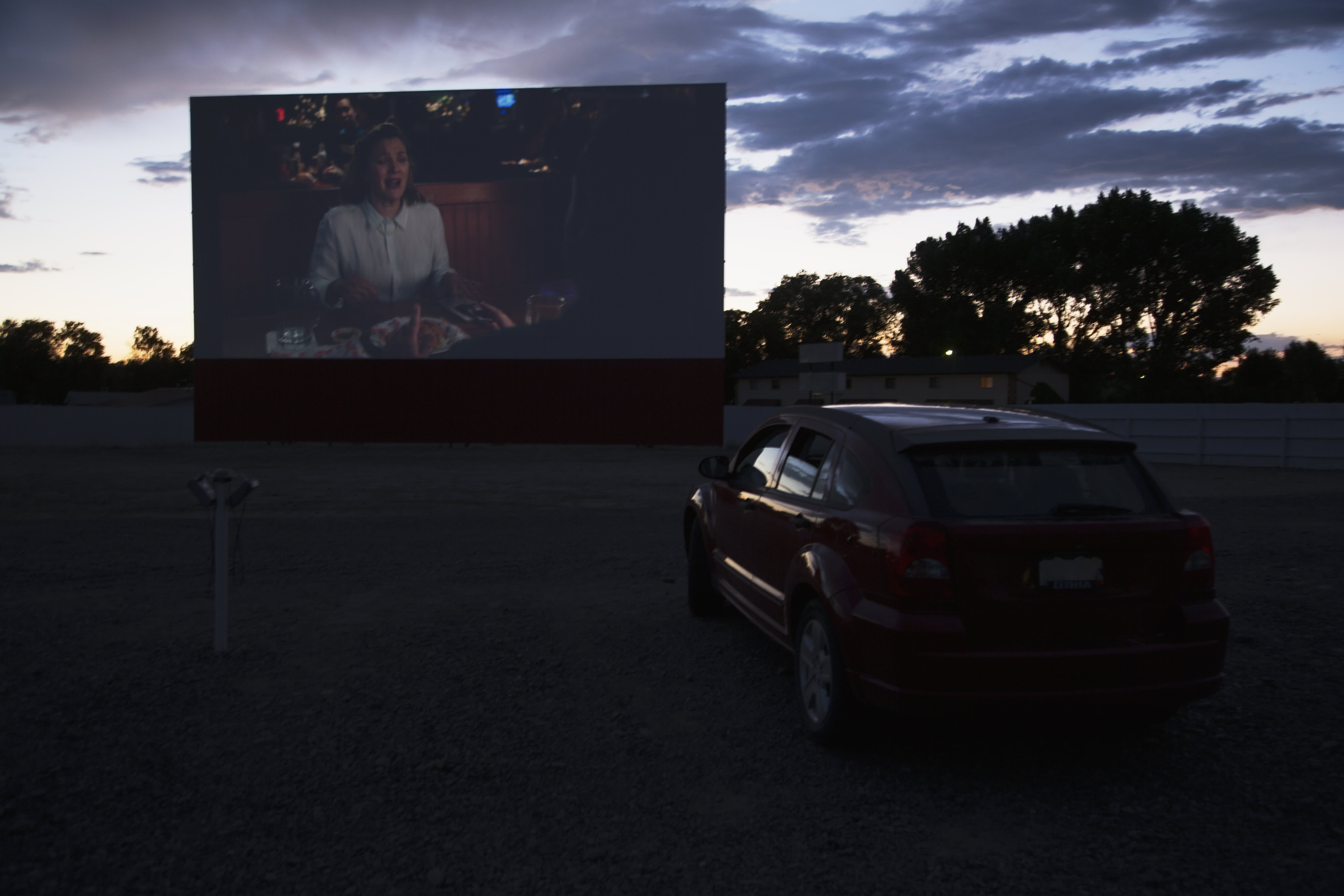Only 5% to 10% of drive-ins across the U.S. are able to operate through the coronavirus, but they are seeing new business.
Joe Sohm | Visions of America | Universal Images Group via Getty Images
The coronavirus pandemic has led to the closures of movie theaters across the country and the delay of coveted 2020 blockbusters like Disney and Marvel Studios’ “Black Widow” and MGM’s James Bond film “No Time To Die.”
But that does not mean going to the movies is out of the question.
Drive-in theaters throughout the U.S. have not only remained open, but have seen spikes in revenue as consumers desperately look for ways to escape their houses while abiding by the rules of social distancing.
Andrew Thomas, for example, owner of the Showboat Drive-In Theater in Hockley, Texas, saw a 40% increase in sales revenue two weeks ago, and a 95% increase this past week, just by showing the same two movies: Disney and Pixar’s “Onward,” and the Universal Pictures horror film “The Invisible Man.”
“Everyone is looking for a way to feel normal and this is a way of being safe,” Thomas said. “I spend all day answering emails from people who never heard of us before, because they are trying to find something to do.”
Drive-ins are also allowing other companies to be “reborn” as well.
Darrell Landers, founder and CTO of Ultimate Outdoors Entertainment, an outdoor movie-screen rentals company, told CNBC that his company has lost a substantial amount of revenue since the coronavirus led to mass public closings. Landers’ company survives off of bringing large groups of people together to watch movies outdoors.
But UOE has since refocused on its mobile drive-in theater business, which has been intact for 12 years, utilizing its LED screens to allow movies to be watched at all times of the day.
“Showing movies during the day outside is a new concept, and we are using the LED screens to test-drive movies at other times than just at night,” Landers said. “So the drive-in is sort of a rebirth and a way for us to replace some of the income that we lost.”
And now business is booming.
Kat Randolph, UOE’s director of sales and marketing, believes they will see an incline in business, as they have already received dozens of inquiries from consumers, including requests from Los Angeles entertainment companies that are looking to give back to local communities.
“People want to be a part of the theater experience in any shape or form,” Randolph emphasized.
Only 5% to 10% of drive-ins throughout the U.S. are actually benefiting from the coronavirus, stressed Jim Kopp, the administrative secretary for the United Drive-In Theatre Owners Association, and owner of the Family Drive-In, in Virginia.
New York, Pennsylvania, Ohio, Virginia and Maryland, which collectively makes up 89 of the 305 US drive-ins, have been forced to shut down due to the coronavirus.
“We would all love to be open,” Kopp said to CNBC. “We know a lot of folks want a safe environment to see movies and to experience entertainment as a family.”
And John Vincent, president of the UDITOA and majority owner of the Wellfleet Drive-In, in Massachusetts, said that “we need a stimulus package to get us through this,” referring to the requests made by the National Association of Theater Owners, in which they are seeking a bailout to keep theater owners afloat.
“Like the indoor theaters, we survive off concessions. The ones open will take what they can get,” Vincent added. “We look forward to the industry recovering as a whole, because we can only do so much without studios releasing big movies.”
But according to Thomas, the Showboat Drive-In Theater owner in Texas, even with the inevitable return of movie theaters across the nation, consumers will not immediately feel safe returning to auditoriums in such big masses, which makes drive-ins a much more viable option.
“Because people will have fears of gathering in public, the viability of the drive-in business will grow,” Thomas claimed.
Some drive-in movie theaters in the U.S., as well as in Europe, are seeing new business as a result of the coronavirus shuttering big cinema chains and delaying Hollywood new releases.
Picture Alliance | Getty Images
With movie theaters possibly staying shuttered for a majority of the summer, Thomas is asking big studios to consider releasing their coveted summer blockbusters with drive-in theaters.
“People will come because they want that sense of normalcy,” he said.
Besides “Black Widow” and “No Time To Die,” Paramount Pictures delayed the release of “A Quiet Place Part Two,” the anticipated sequel to John Krasinski’s 2018 horror film that grossed more than $340 million worldwide. Universal pushed back the ninth installment of The Fast & Furious franchise, “F9,” until April 2021; its 2017 predecessor, “The Fate of the Furious,” grossed over $1 billion worldwide. And Warner Bros. announced Tuesday that “Wonder Woman:1984” will not be released until August; it was supposed to debut in June.
The coronavirus has brought a lot of uncertainty to the global economy, and the future of the movie business is unknown at the moment. But one certainty remains: “The desire for people to somehow recapture the singular, irreplicable, communal big-screen movie theater experience in any way they can is a testament to how important the moviegoing experience is,” said senior media analyst Paul Dergarabedian of Comscore. “Particularly during these obviously trying and unprecedented times.”
Disclosure: Universal Pictures, owner of the Fast and Furious franchise, is owned by Comcast, CNBC’s parent company.
